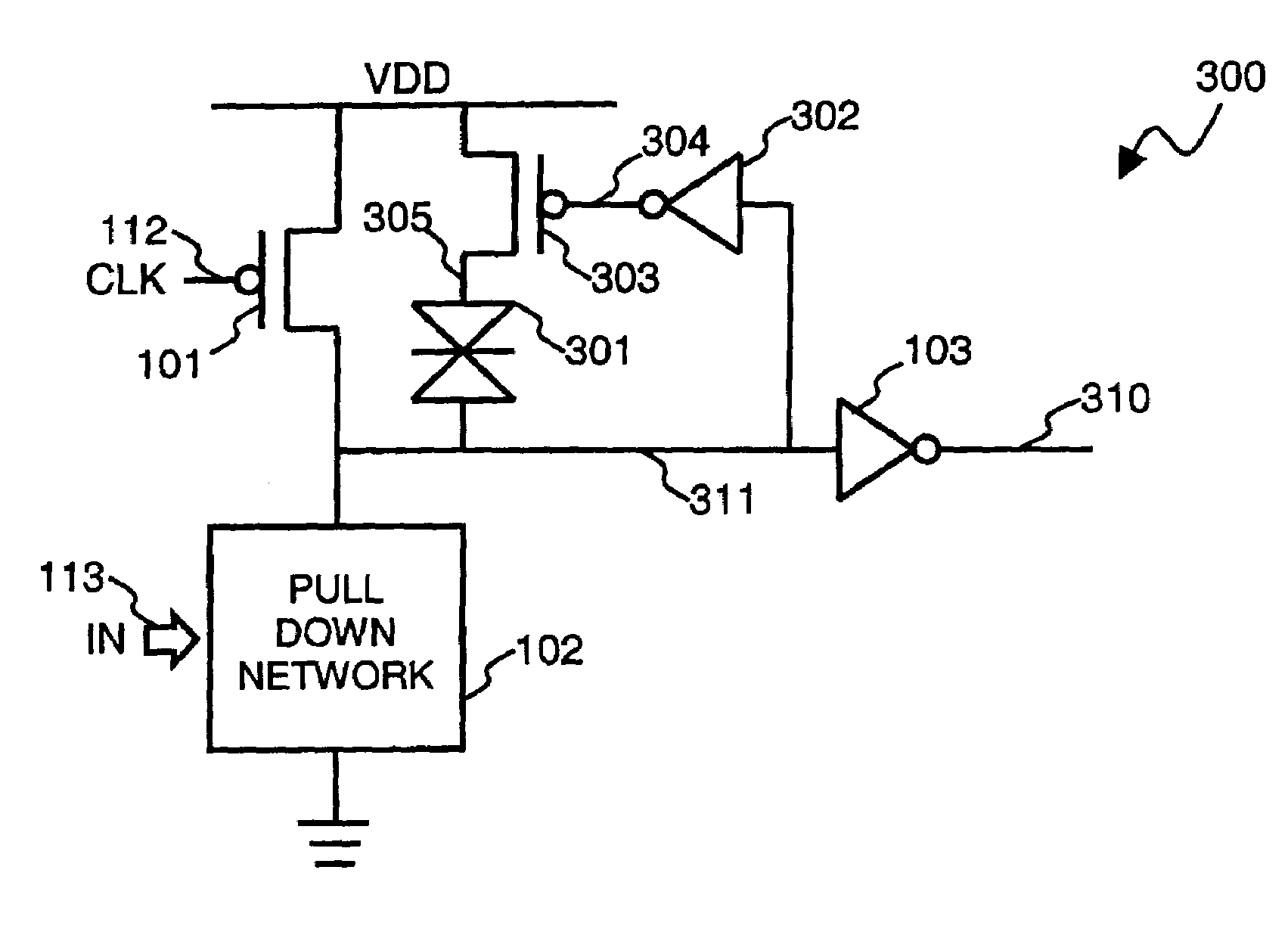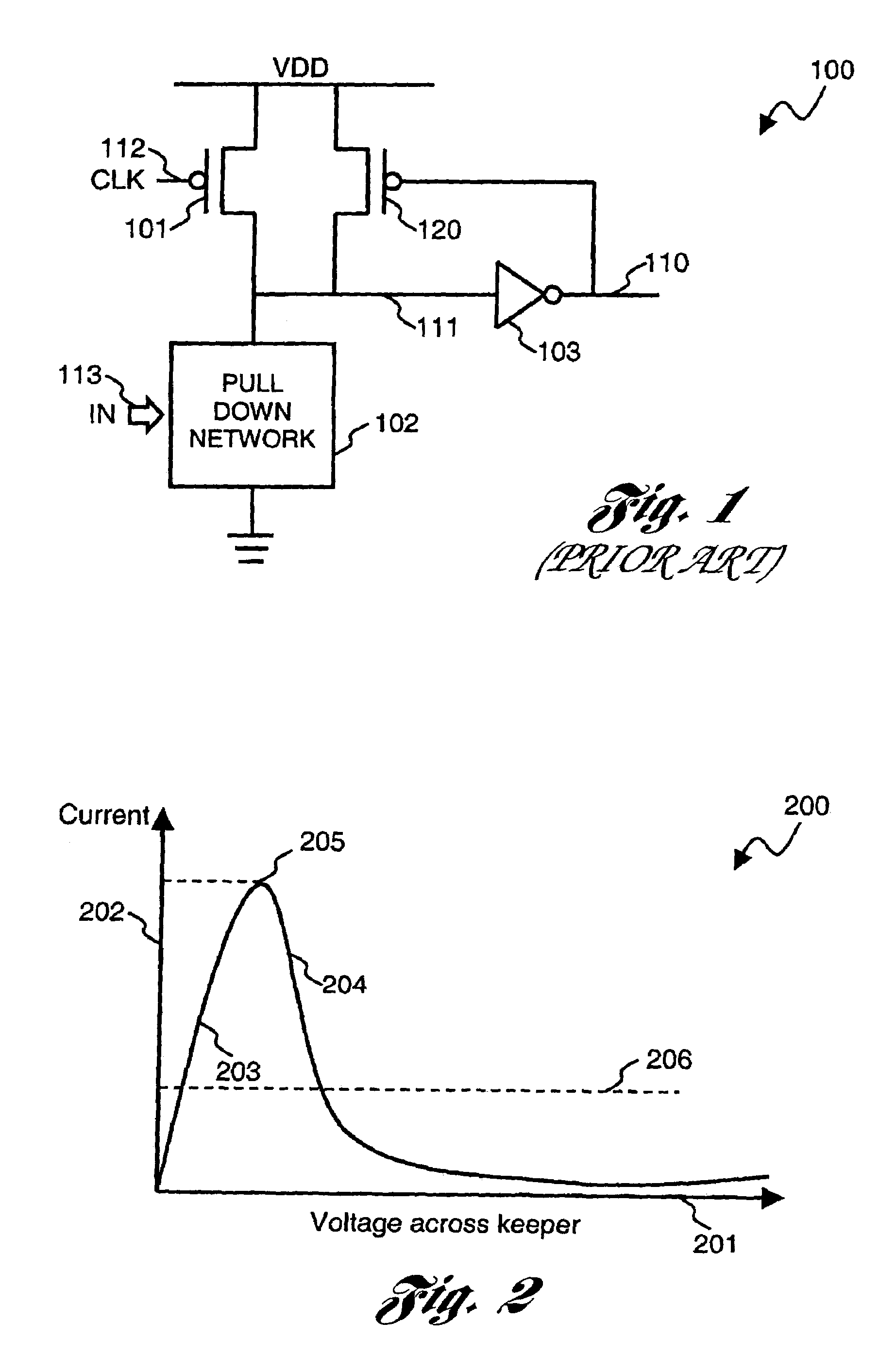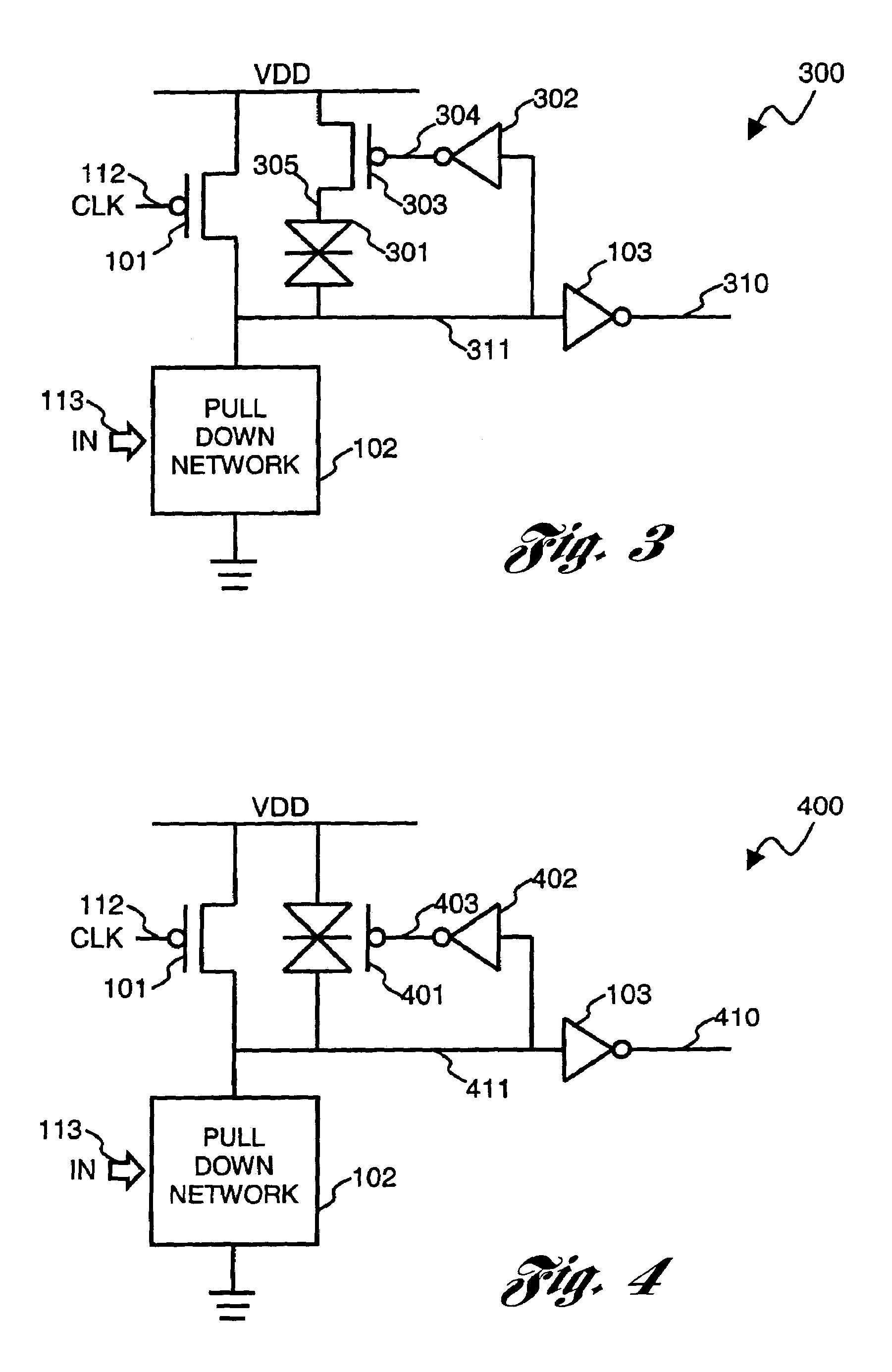Dynamic circuits having improved noise tolerance and method for designing same
a technology of dynamic circuits and noise tolerance, applied in logic circuits, logic circuits characterised by logic functions, pulse techniques, etc., can solve the problems of little impact on the performance of integrated circuits, inability to design dynamic circuit gates, and inability to design dynamic circuits, so as to improve noise tolerance and design the effect of noise tolerance and design method, circuit speed and power consumption, and low overhead in area
- Summary
- Abstract
- Description
- Claims
- Application Information
AI Technical Summary
Benefits of technology
Problems solved by technology
Method used
Image
Examples
Embodiment Construction
[0115]In general, this invention is about design methodology and circuit implementations of a novel class of keepers for improving the noise tolerance of dynamic logic circuits. The circuit techniques described herein have the following advantages:[0116]1. It improves dynamic circuit noise tolerance against all types of noises including, but not limited to, charge sharing noise, leakage noise, input noise (mainly due to interconnect coupling), power and ground noise, and substrate noise.[0117]2. It has very limited overhead. The keeper typically includes only 2–4 devices. The area overhead can be negligible in wide fan-in dynamic logic gates.[0118]3. Its speed overhead is considerably smaller in comparison with prior techniques. The noise tolerance of dynamic logic circuits can be improved to the level of static logic circuits with a delay overhead of only 10%.[0119]4. Dynamic logic gates using the keeper disclosed in this invention consume no DC power. Further, the AC power consump...
PUM
 Login to View More
Login to View More Abstract
Description
Claims
Application Information
 Login to View More
Login to View More - R&D
- Intellectual Property
- Life Sciences
- Materials
- Tech Scout
- Unparalleled Data Quality
- Higher Quality Content
- 60% Fewer Hallucinations
Browse by: Latest US Patents, China's latest patents, Technical Efficacy Thesaurus, Application Domain, Technology Topic, Popular Technical Reports.
© 2025 PatSnap. All rights reserved.Legal|Privacy policy|Modern Slavery Act Transparency Statement|Sitemap|About US| Contact US: help@patsnap.com



